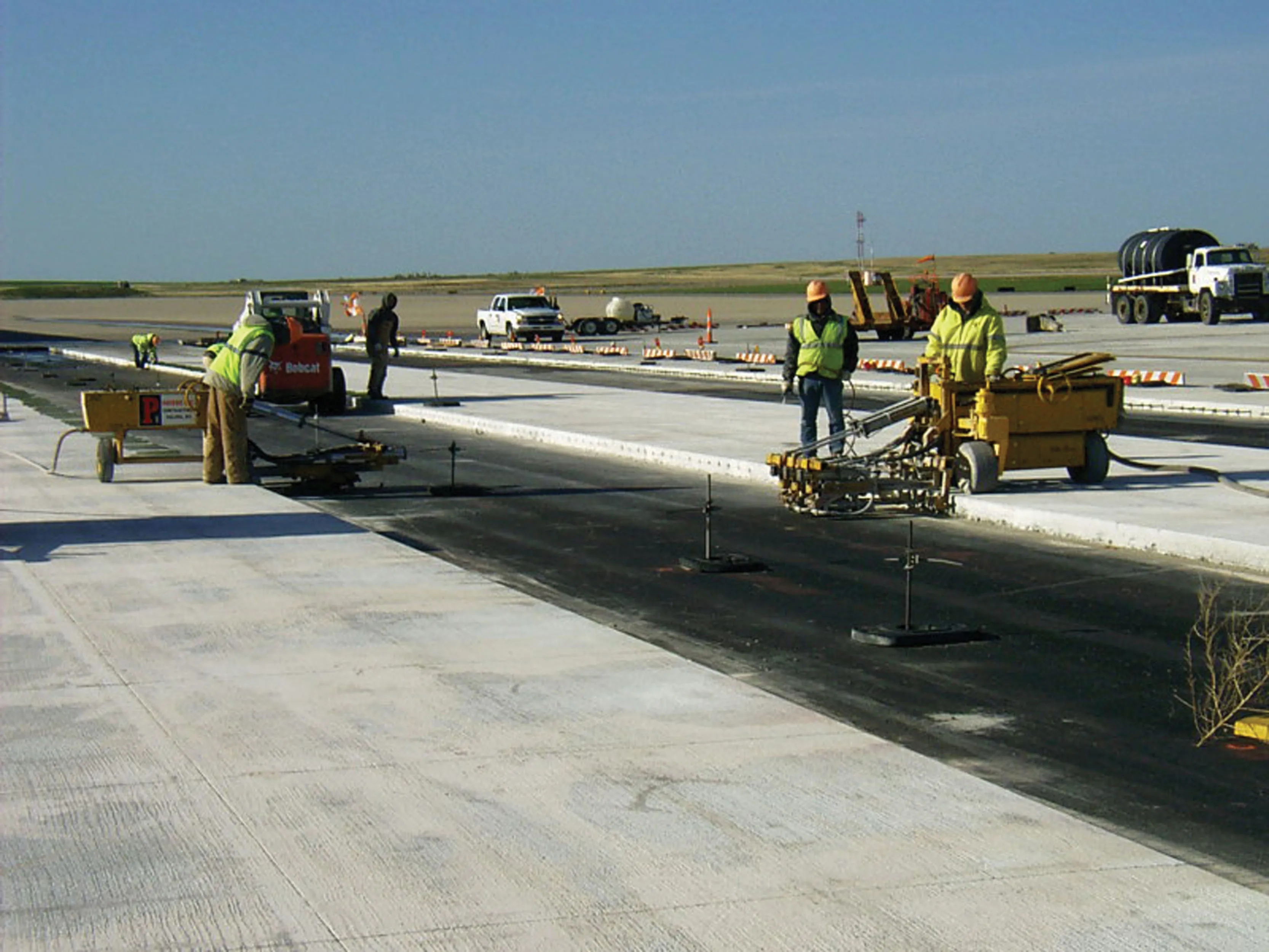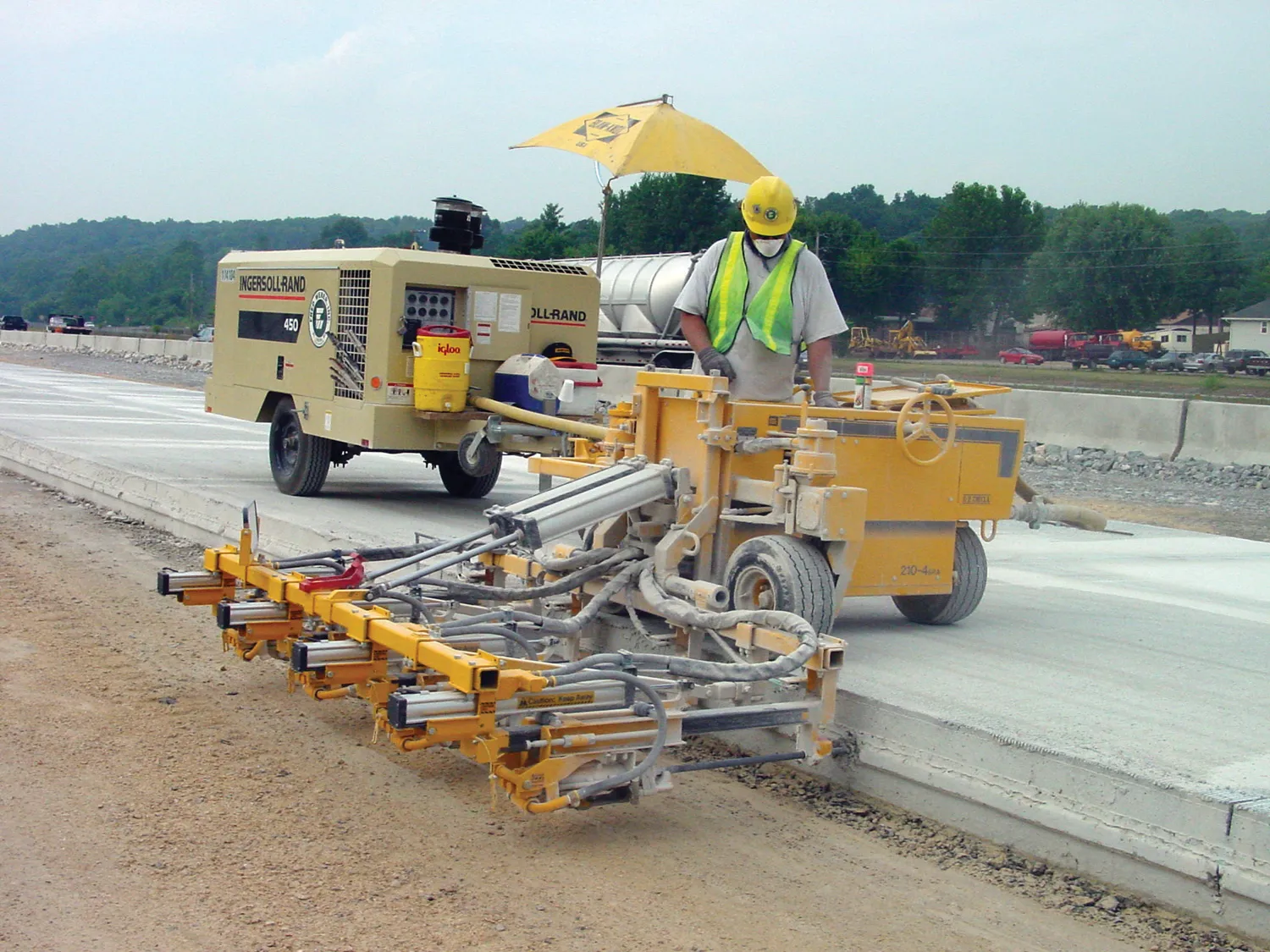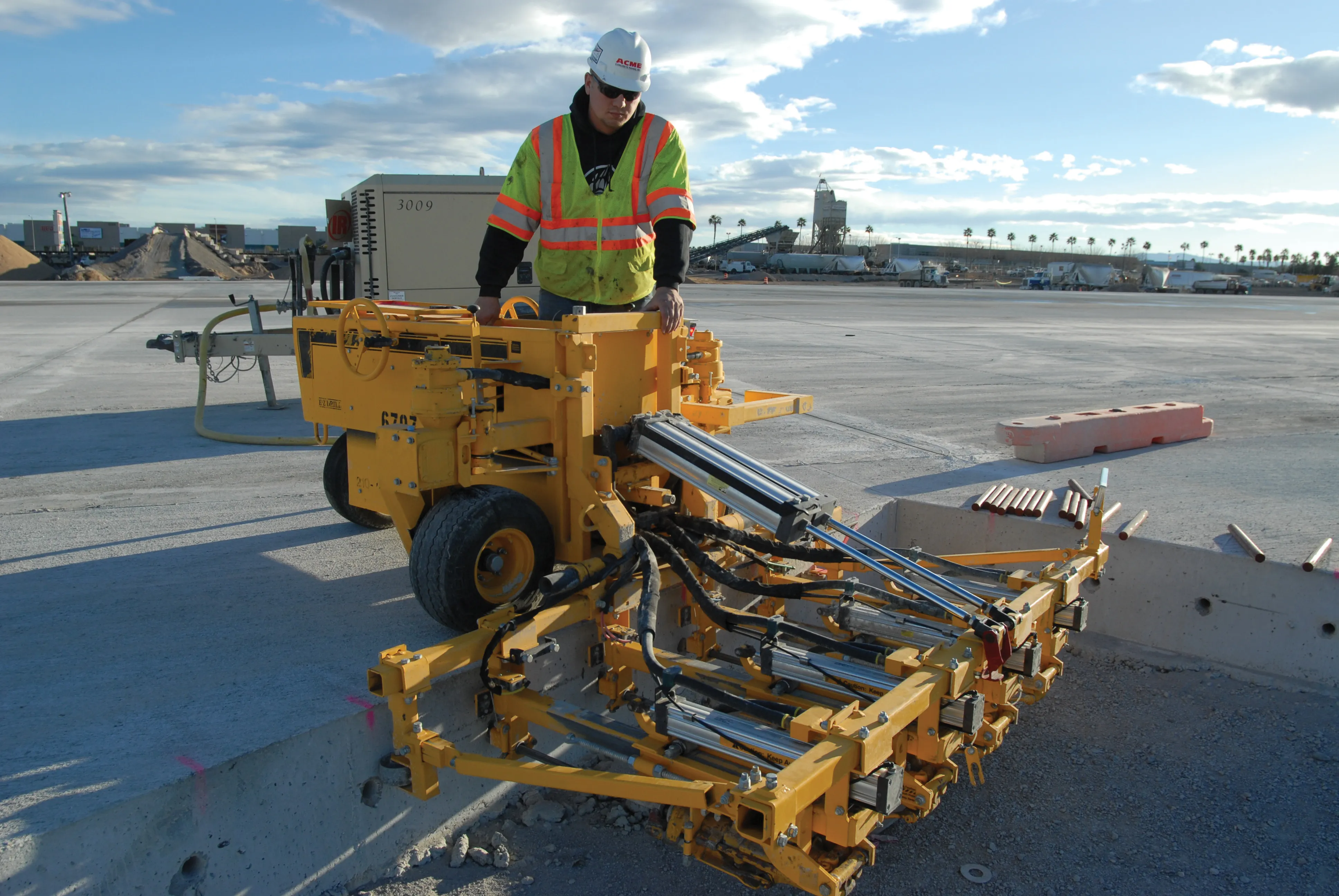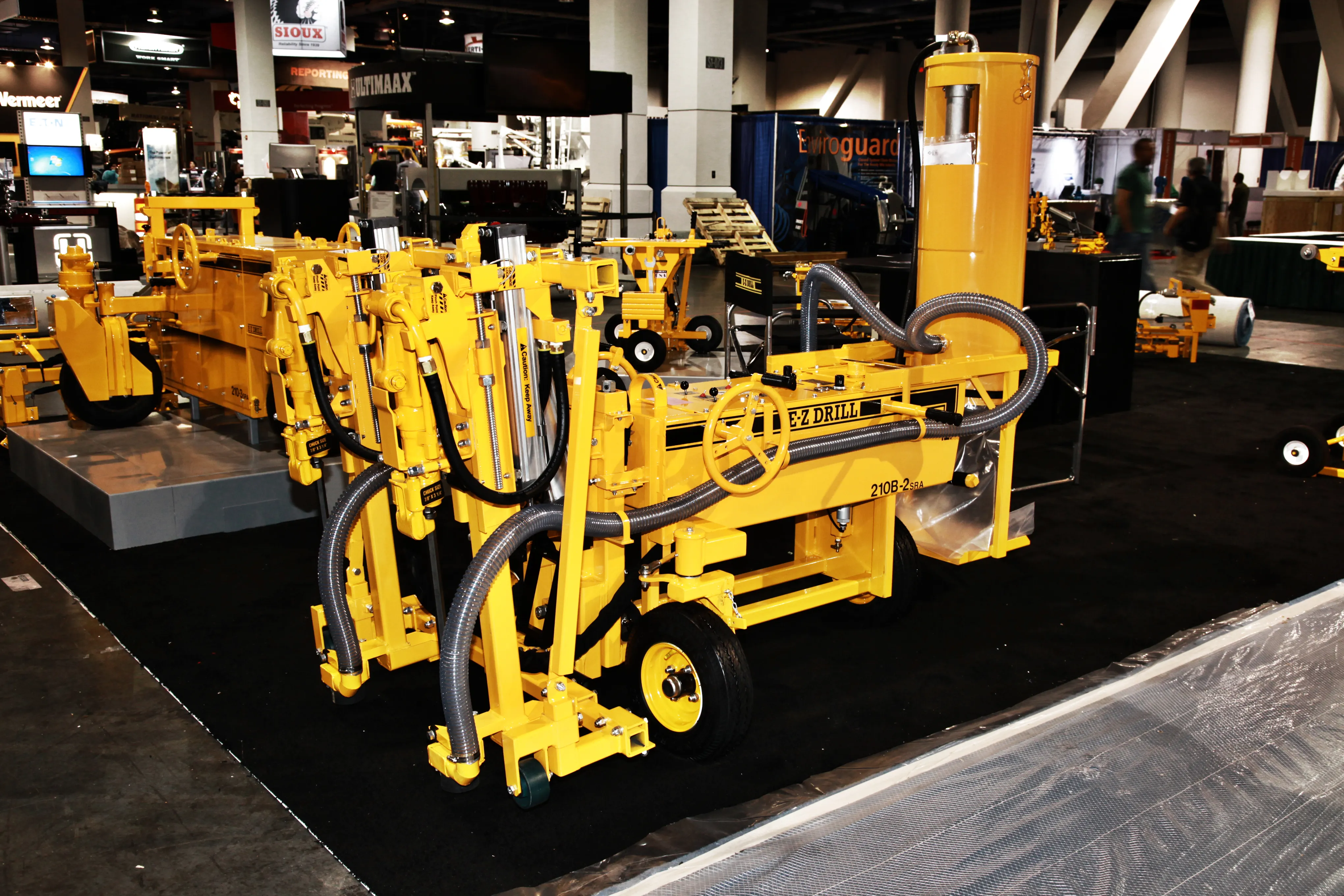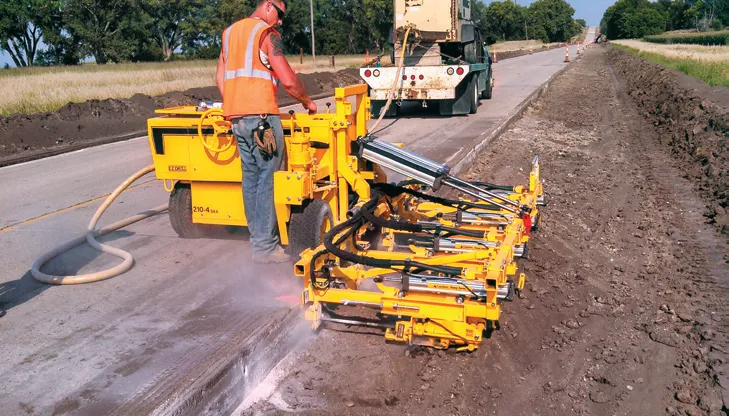
Nebraska Highway 92 in the US stretches from Nebraska’s western border with Wyoming to Omaha where the highway leaves Nebraska and enters Iowa, taking motorists through farmland and several towns and counties across the state. It’s also a major roadway that branches off from Interstate 80 and leads motorists through Polk County, Nebraska, where a recently completed road project is enhancing safety for motorists.
The entire project included diamond grinding the surface of the road, replacing areas of the road that had suffered excessive wear, and paving the highway’s earth shoulders which required over 40,000 dowelling holes that had to be spaced twice as far apart than normal.
In May 2013, the Nebraska Department of Roads (NDOR) initiated the resurfacing, restoration and refurbishing project. In addition to making the roadway safer, the project was intended to reduce maintenance
costs associated with maintaining the highway’s earth shoulder. The NDOR awarded the concrete
work to Palmyra, Missouri-based Chester Bross Construction, which was ready with its fleet of
The Polk County project replaced 34.76kms of the earth
shoulder with concrete and increased the width of each lane to 3.65m to provide adequate stable area for tractors and increase safety for everyone on the road. Chester Bross Construction also replaced 4,537m² of road surface.
The crew had to perform the grading, culvert, paving and guardrail work within 160 days. And all that new concrete meant a lot of tie bars and a lot of dowel drilling. The Chester Bross crew of 16 had to drill a total of 40,492 holes, 22.86cms deep, to tie 45.72cm rebar into the existing concrete. Also, because the shoulder is far less travelled than the main roadway, it required less reinforcement from tie bars, so holes could be spaced every83.82cm, 53.34cm wider than typical roadway projects. While this reduced costs and the number of holes by 65,000, it created a challenge for Chester Bross Construction – the company’s drills could only achieve a maximum of 76.2cm spacing.
“This is a fast pace for this type of work, which created a challenge to get the project done in the timeframe with the equipment we had,” said Tim Bennett, operations manager for Chester Bross Construction. In addition, the crew could only work on 3.22km of road at a time. E-Z Drill manufactures a variety of concrete dowel drills, including on-grade, on-slab and equipment mounted units that offer up to five gangs. At the time, Chester Bross Construction already had several E-Z Drill models, including two 2-gangs and several single drills. The company considered modifying its two 2-gang drills for 83.82cm spacing, but it wouldn’t give them optimal efficiency. It would take over double the time to reposition one drill as opposed to the possibility repositioning just one drill that could accomplish several holes at once
.
For this project, Chester Bross needed a fast and efficient drill that would allow it to drill more holes at a time without pulling some all-nighters to get it done before the deadline. A new drill was required.
Randy Stevens, vice president of sales at E-Z Drill, who had been approached by Bennett’s sales contact at a Missouri-based equipment dealer, recommended the E-Z Drill 210-4SRA 4-gang Slab Rider, modifiable to achieve up to 83.82cm spacing. In addition to drilling four holes at once, the drill auto-aligns and quickly repositions itself after each set, which helped the team work quickly and efficiently.
Work on Nebraska 92 began on June 1 2013, with Chester Bross opening up the first 3.22km stretch on the west end near the Platte River. “Once we prepared the subgrade on two miles, it was critical we got the drilling done as fast as possible,” said Bennett. “The new drill doubled our productivity from what we would have experienced with our 2-gang models, and that allowed us to stay on track and meet the
deadline.”
Bennett also noted the crew didn’t have to spend time repairing areas of road that suffered inadvertent damage or perform maintenance on the drill. “We worked six days a week, so to have a drill with no downtime really optimised our time,” he said.
As the drilling and shoulder work progressed east, Chester Bross also replaced 11 areas of severely settled concrete. The company used its 210B SRA single-gang model E-Z Drill to drill 242 holes into the existing concrete slab for the tie bars. Bennett said the single-gang worked great for these areas.
Having the right drills gave Bennett and his crew the accuracy, efficiency and speed they needed to wrap up the project in late October 2013.


